Are you ready to unleash the power of your trusty circular saw? It’s time to take your DIY skills to the next level by learning how to cut paving stones with precision and finesse. No more struggling with outdated methods or limited tools – with the right knowledge and a dose of creativity, you can create stunning pathways or patio designs that will impress everyone. This guide will walk you through the steps of effectively wielding a circular saw to conquer those stubborn pavers, ensuring your projects are cut above the rest. So grab your safety goggles and let’s dive into the world of paving stone cutting!
Steps to cut pavers with a circular saw
STEP 1: Mark the cut line
The first step in the process is to mark the cut line. By doing this, you not only ensure the accuracy of your sawing, but also provide yourself with a visual reference point when it comes time to make the actual cuts. To mark the line, you can use painter’s tape or any other marking device that suits your preference. It’s important to make sure that the markings are clearly visible and easy to read. Neglecting this step may lead to costly and time-consuming errors that could have been easily avoided. Taking the time to mark the cut line properly will help you achieve precise and clean results in your woodworking project.
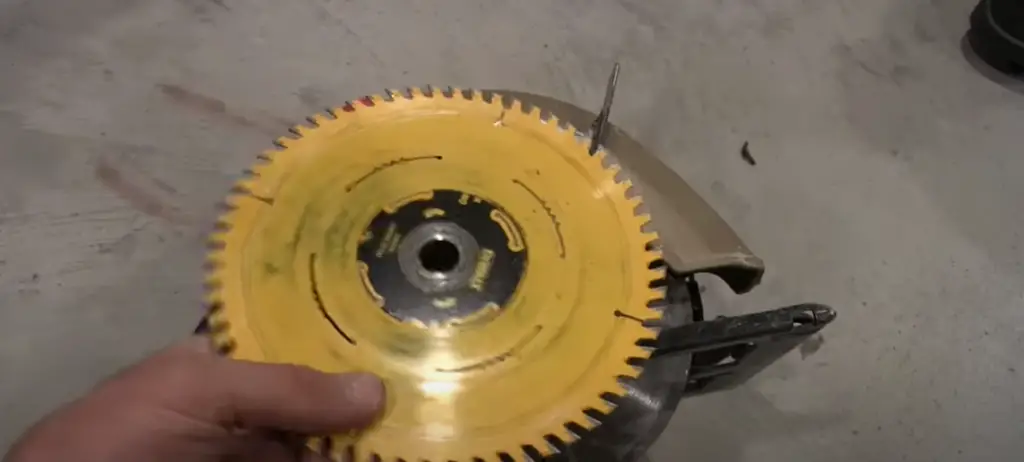
STEP 2: Set the saw’s depth
When it comes to setting the proper blade depth, the key is to ensure that your blade is positioned effectively for a clean cut. Aim to set the blade at least 1/2 inch deeper than your intended cut line. This extra depth will allow the blade to effortlessly slice through the paver stone, resulting in a precise and neat finish. To achieve this, most circular saws are equipped with a convenient depth-adjustment knob located on the side. Take advantage of this feature to fine-tune the blade’s level and guarantee an optimal cutting experience.
STEP 3: Secure the stone in place
Once you’ve carefully marked and set the precise depth of your blade, it’s time to secure your paver stone into position. This crucial step can be accomplished using various securing devices such as clamps, a vice grip, or any other reliable equipment. By firmly securing the stone, you ensure that it remains stable throughout the cutting process, minimizing the risk of uneven cuts and potential hazards. Taking the time to properly secure the stone not only contributes to the quality of your work but also promotes a safer working environment.
STEP 4: Cut slowly and evenly
Now it’s time to actually cut through the stone. Be sure to do so slowly and steadily – this is not a race! Take your time to ensure a precise and even cut. Remember, rushing through the cutting process can result in damage to the stone and an uneven cut.
To ensure accuracy throughout the cutting process, periodically check the blade’s depth and the straightness of your cut line. By following these detailed steps, you’ll achieve the desired outcome and create a clean and professional cut.
STEP 5: Clean up after yourself
Once you’ve completed the intricate task of cutting the stone, it’s crucial to allocate ample time for a thorough cleanup. Ensure that your workspace is meticulously cleared of any lingering debris or potentially harmful sharp edges, leaving behind a pristine environment. Additionally, it is highly recommended to carefully examine the cut paver for any signs of fractures or chips. If such imperfections are detected, it is advisable to promptly discard the flawed piece and commence afresh with a new, flawless stone. By paying meticulous attention to these details, you can guarantee a precise and immaculate outcome in your stone-cutting endeavor [1].
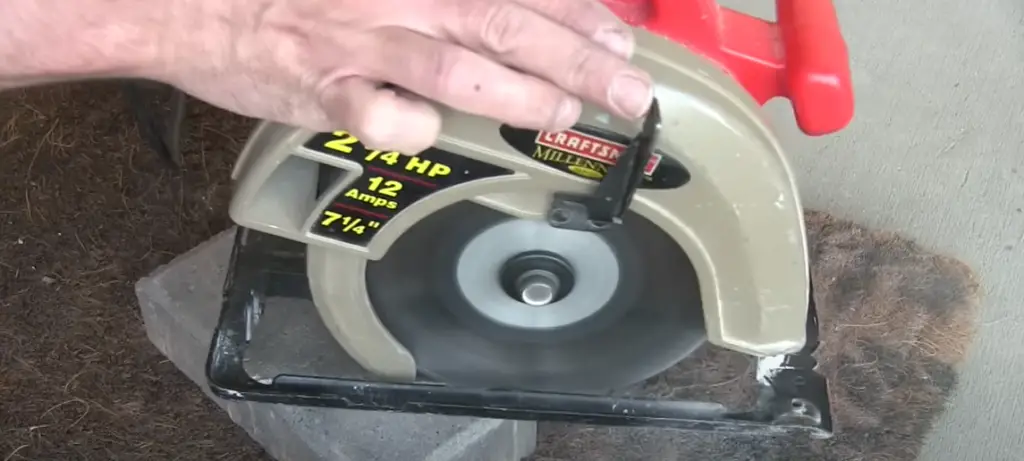
How to cut pavers: Important tips for getting the perfect finish
Cement pavers are one of the most popular materials used in landscaping and construction projects. They have a timeless look that is easy to maintain, making them a great choice for pathways, patios, driveways, and other outdoor surfaces. However, cutting cement pavers can be tricky; if you don’t take your time and follow the right steps, you can end up with uneven or badly cut pavers.
To help you achieve perfect cuts every time, here are six important tips for mastering your circular saw:
- Make sure to use the correct blade for cutting pavers; a diamond-tip blade is best for most projects.
- Choose a slow cutting speed and use a steady back-and-forth motion; this will reduce blade strain and help you get cleaner cuts.
- Mark your cut line clearly using a chalk line or masonry marking pen.
- Line up the saw with the cut line before starting, to make sure your paver is perfectly aligned with the blade.
- Always wear safety goggles and work gloves when cutting pavers with a circular saw.
- Finally, use a damp cloth to wipe off any excess dust or debris on the paver after you’ve finished cutting it.
By following these tips for mastering your circular saw, you’ll be sure to get perfect cuts every time. And you’ll have the perfect paver finish for your landscaping or construction project [2]!
Cutting Pavers With a Masonry Wet Saw
Mark the Cut Line
Before you can cut the paver with a masonry wet saw, you need to mark the cut line accurately. To ensure precision and evenness, a combination of straight edges and chalk lines can be used. By taking this meticulous approach, you can guarantee that your lines are perfectly aligned and your cuts are flawless. It is also crucial to ensure that you have ample space for the entire project before commencing any cutting, allowing for a seamless and efficient workflow.
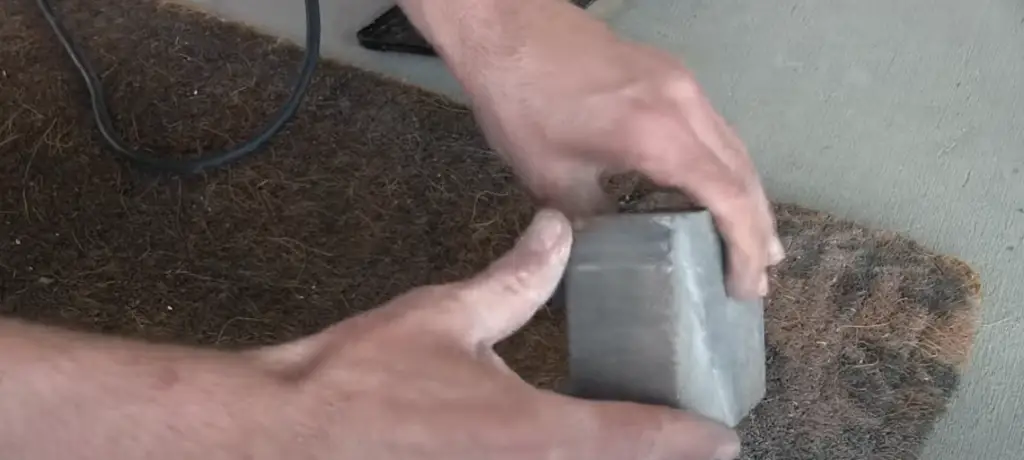
Position the Paver on the Table
Once the cut line has been marked, it is time to position the paver on the table. With a masonry wet saw, make sure that you use a secure stand or clamp and align it with your cut line. This will ensure that your paver won’t move when cutting and also help keep yourself safe while operating the tool. It is important to take safety precautions when using a masonry wet saw, such as wearing protective eyewear and gloves.
Adjust the Blade Depth
Now you’re ready to adjust the blade depth of your masonry wet saw. This should be done by setting the blades according to your desired cutting depth. Depending on the model, this can usually be adjusted manually or with a lever. Be sure to double-check the blade depth before turning on your saw to ensure that you have it set correctly for the task at hand.
Turn on the Saw
Once you have the blade depth set to your desired level, it is time to turn on the saw. Begin by slowly turning on the power switch and allow the blade to come up to full speed before beginning to cut. As you begin cutting, make sure that you apply steady pressure throughout the process in order to ensure a clean and even cut. You may need to periodically stop the saw and check that the blade is still in line with your marked cut line.
Make the Cut
Now you can cut with your masonry wet saw. When pushing the paver through the blade, make sure to do so at a steady and consistent rate and keep an eye on the cut line to ensure that it is in alignment throughout the process. If necessary, you can gently adjust the paver as needed while cutting. Once you have finished making your cut, you can turn off the saw and carefully remove the cut piece.
Retract the Sled
After the cut has been made, it is important to retract the sled of your masonry wet saw. This will make sure that you have a clear view of the blade and table for future cuts. Make sure to follow all guidelines provided by the manufacturer when using a masonry wet saw in order to ensure safety and accuracy with each use. With practice and precision, you can become a master of the circular saw and create perfect cuts every time.
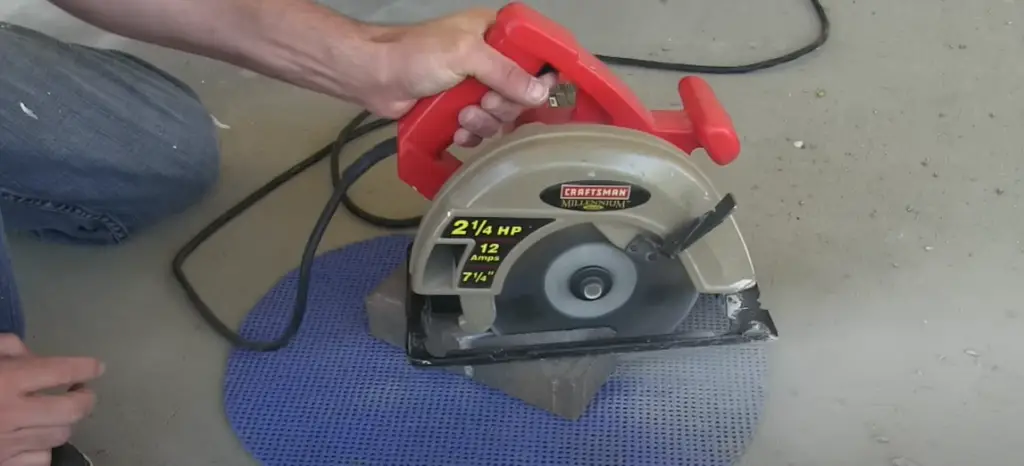
Cleaning and Storage
Once your project is complete, it’s important to clean and store your masonry wet saw correctly. To do this, you’ll need to clean off any debris from the blade guard or table with a soft cloth. Make sure to unplug the saw before cleaning and wear protective gloves. Once it is clean, you can store your saw in a dry area and cover it with a tarp or cloth to ensure that no dirt or dust finds its way inside the motor housing. With proper storage, your masonry wet saw will stay in top condition for years of reliable use.
Cutting Pavers With a Brick Splitter
If you’re looking for a way to cut pavers quickly and easily, then look no further than the brick splitter. With its powerful diamond-tipped blade, the brick splitter makes short work of even the toughest paving jobs. Plus, it’s compact enough to fit in tight spots – making it an ideal choice for small jobs around your garden or driveway.
To get the most out of your brick splitter, here are a few tips to keep in mind:
- Cut slowly and carefully, making sure you have full control over the blade’s motion at all times. The last thing you want is for it to slip or jump unexpectedly while cutting.
- When starting a new cut, make sure you position the blade on the outside edge of the paver, and then gently guide it along until you reach the desired location.
- Angle your cuts at 45 degrees to ensure a clean cut every time.
- When finished, be sure to turn off your brick splitter before removing any material from the cutting area. This will help prevent accidental slips or injuries.
By following these simple tips, you’ll be able to get the most out of your brick splitter and make sure that all of your projects come out looking perfect. Happy cutting!
How to clean and maintain a circular saw?
Maintaining your circular saw is key to ensuring its longevity and keeping it running in perfect working order. Here’s how:
- Unplug the saw before cleaning. It’s important for safety reasons to always keep your power tools unplugged when not in use, but especially when you’re cleaning them.
- Start by brushing off the saw’s surface and removing any large pieces of debris or dust with an old toothbrush.
- Once you’ve removed the larger pieces of dirt, use a soft cloth dampened with water to wipe down the saw and remove any remaining dust.
- To get into crevices and hard-to-reach spots, use a soft brush or wire brush.
- If you’re using your saw often and it has been exposed to dirt, oil, and grime, you may need to use a degreaser or solvent cleaner with the cloth or brush. Be sure to read label instructions carefully before applying any cleaning products to your saw.
- Once you’ve cleaned your saw, dry it off with a clean cloth and reattach any screws or bolts that may have come loose while cleaning.
- Finally, lubricate the moving parts of the saw to keep everything running smoothly. Use a light machine oil and apply sparingly so you don’t oversaturate the parts.
Maintaining and cleaning your circular saw regularly will help to ensure that it lasts a long time and continues to perform at its best. With these simple tips, you can keep yours running smoothly with minimal effort [3]!
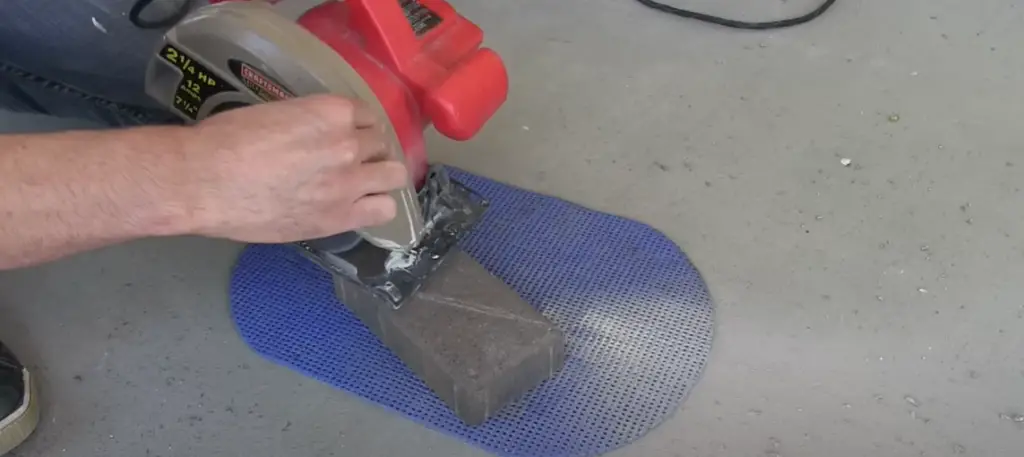
FAQ
Can you use a circular saw for pavers?
Yes, a circular saw can indeed be used to cut through pavers. When selecting a circular saw blade for this task, it is crucial to choose one specifically designed for cutting through hard materials like pavers. This will ensure more precise and efficient cuts. Remember to prioritize safety by wearing safety glasses to protect your eyes from any potential debris or flying particles. Maintaining a clear workspace is also important, as it helps prevent accidents and ensures a smooth cutting process. To achieve an even cut, you can utilize a piece of scrap wood or a level as a guide. By following the manufacturer’s instructions carefully, you can ensure proper operation and maximize the efficiency of your circular saw.
What is the best way to sharpen a circular saw blade?
The best way to sharpen a circular saw blade is with a sharpening stone or diamond-coated file. Start by cleaning off any dirt and debris on the blade, then insert the sharpener into one of the teeth and move it back and forth until you achieve the desired sharpness. Be sure to apply even pressure throughout the entire process. For safety purposes, wear gloves and goggles when using a diamond-coated file. It is also important to use a consistent angle so that you get an even cutting edge on the blade. With proper technique and patience, you can have your circular saw blade as good as new in no time.
What is the best way to secure a circular saw in place?
The best way to secure a circular saw in place is by using clamps to hold it firmly against the material you are cutting. If possible, clamp the saw from both sides of the blade for added stability. This will ensure that your cuts are straight and accurate, as well as help keep your hands safe from the blade. Additionally, make sure the saw is securely fastened to the surface you are cutting before beginning your work. This will prevent any slipping or wobbling during the cutting process. Properly securing a circular saw is essential for optimal safety and functionality, so be sure to take precautions when using one.
Do circular saws come with blades?
Yes, most circular saws will come with a blade already installed. When purchasing a new circular saw, it is important to check the included blade to make sure it is compatible with the saw and suitable for the type of material you plan on cutting. If not, you can always purchase additional blades that are specifically designed for various materials and applications. It is also a good idea to read the manufacturer’s instructions before using your saw for the first time, as this will help you get familiar with its features and ensure safe operation.
What tips can I follow to improve my circular saw skills?
Improving your circular saw skills requires plenty of practice, but there are a few key tips to keep in mind. The first is to use a blade with the correct number of teeth for the material you are cutting; this will help prevent dulling or chipping of the blade. Additionally, be sure to adjust the depth and speed settings according to your needs. If you are dealing with a thick piece of wood, opt for a slower speed but higher torque setting for more control. Finally, always wear appropriate safety equipment and keep the saw clean to ensure optimal performance. With these tips in mind, you can start sharpening your circular saw skills and become a master in no time!
Can I cut concrete pavers with a circular saw?
Yes, you can indeed cut concrete pavers with a circular saw. However, it is important to find a blade specifically designed for this purpose to achieve accurate and even cuts. When selecting a blade, look for one that has thick carbide teeth that will withstand the abrasiveness of concrete while still providing precise cutting performance. Additionally, always remember to wear protective gear and take extra precautions when cutting through concrete – it can be tricky to control due to its hardness. By following the manufacturer’s instructions and keeping these tips in mind, you can easily cut through concrete pavers with your circular saw.
Useful Video: How to cut bricks with a Circular Saw / Skil Saw Dry Cut Pavers
Conclusion Paragraph
To cut pavers with a circular saw, you need to understand the basics of how a circular saw works and the different cutting options available. A good blade with sharp teeth is essential for making clean cuts in pavers and other materials. Understanding the correct speed settings for your specific brand of saw will help ensure that the cuts are smooth and accurate. It’s also important to use appropriate safety gear, such as eye protection and gloves when operating a circular saw. With these tips in mind, you’re now ready to start cutting pavers with your trusty circular saw!
References:
- https://benchmarkabrasives.com/blogs/news/how-to-cut-pavers-with-a-circular-saw
- https://www.thespruce.com/how-to-cut-pavers-2132502
- https://www.worx.com/blog/know-circular-saw-maintenance/






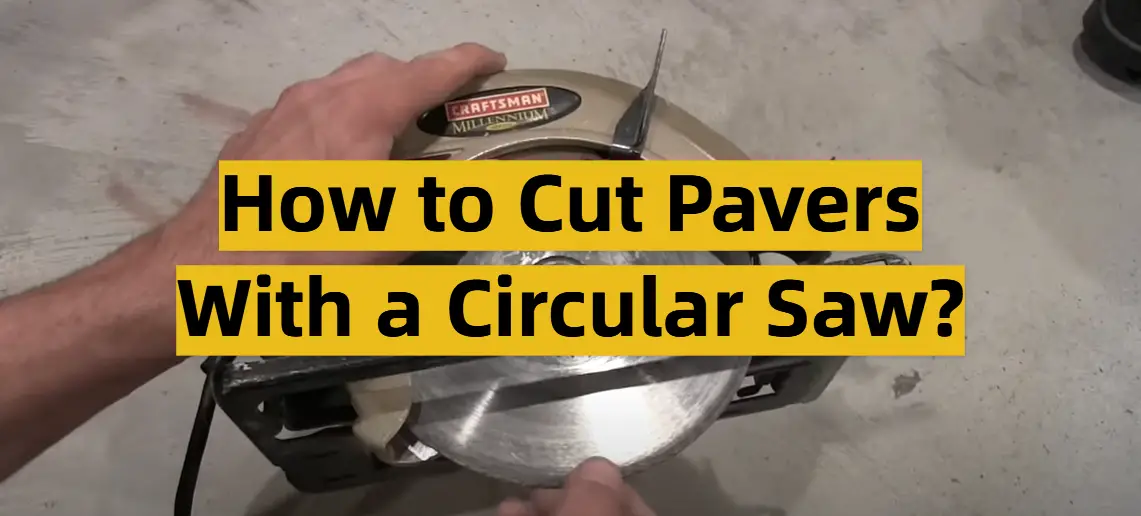








Leave a Reply